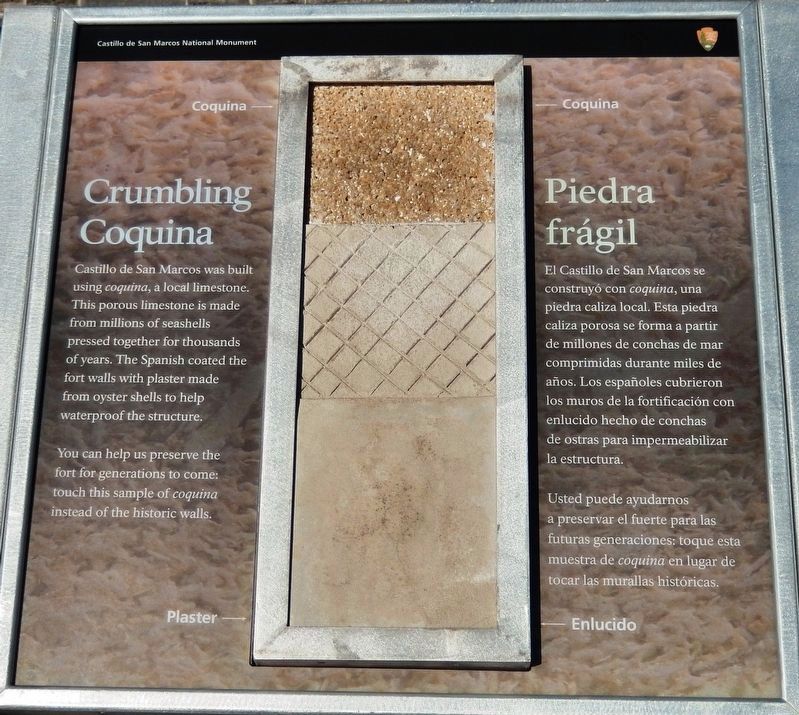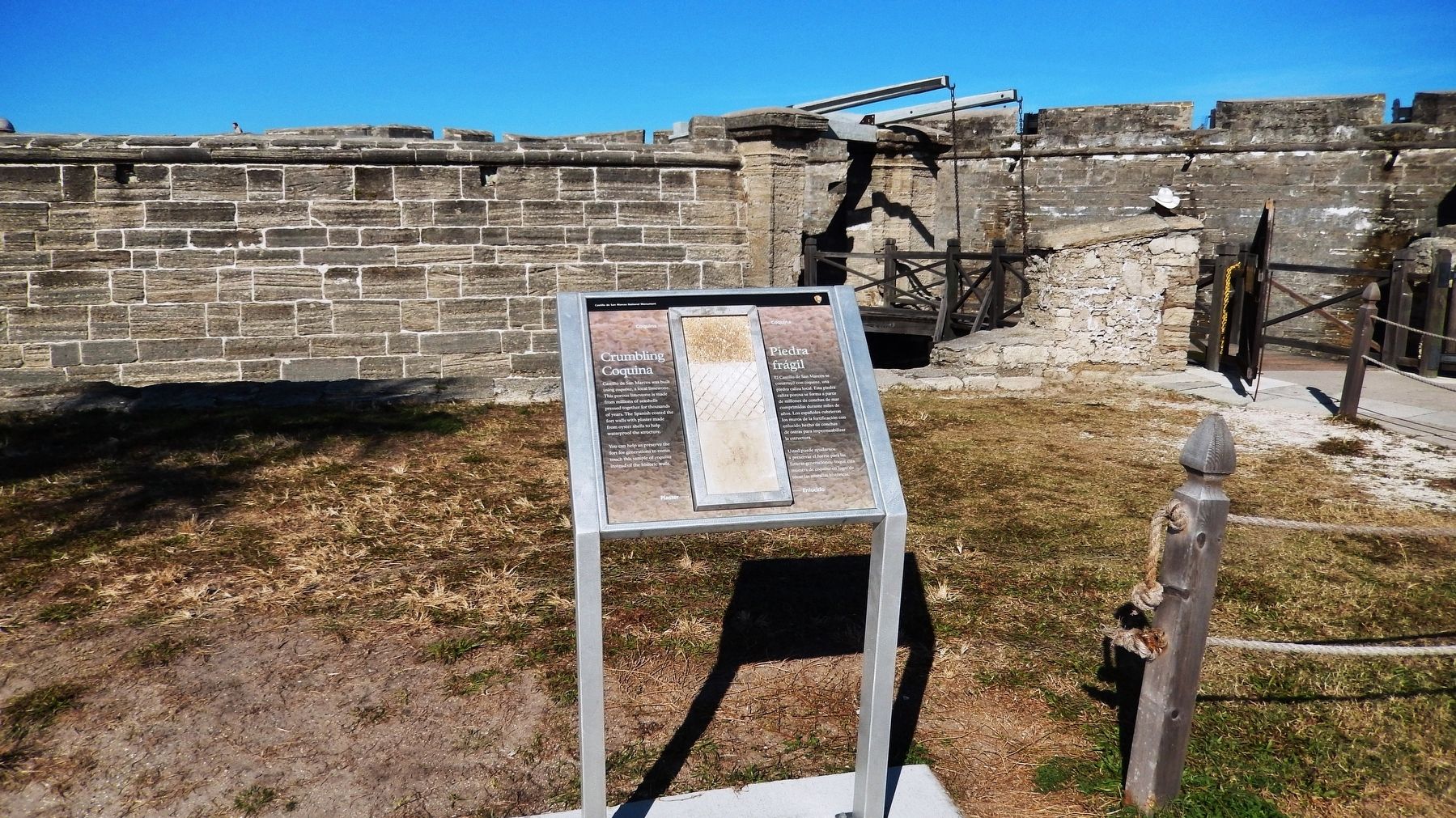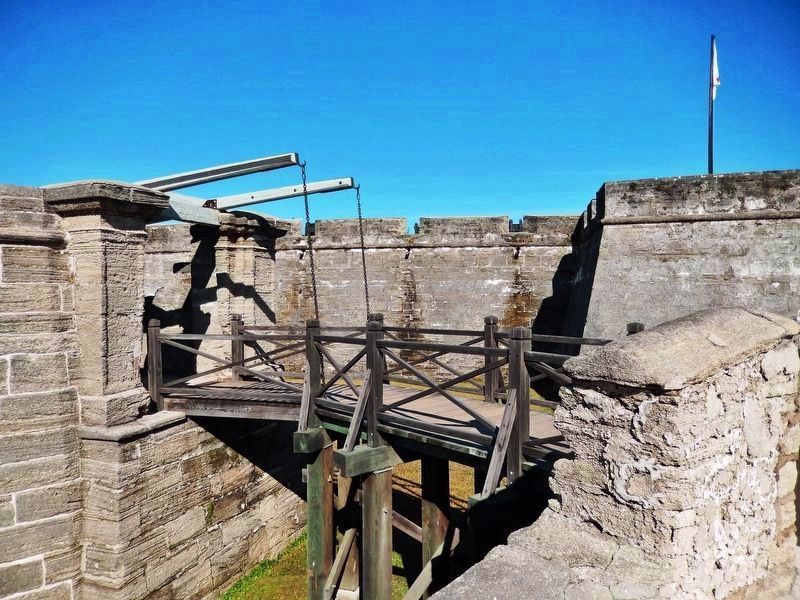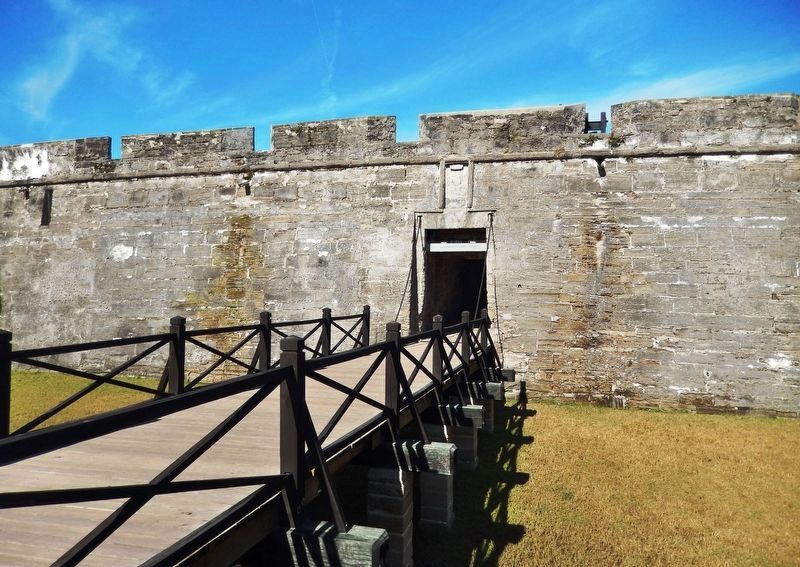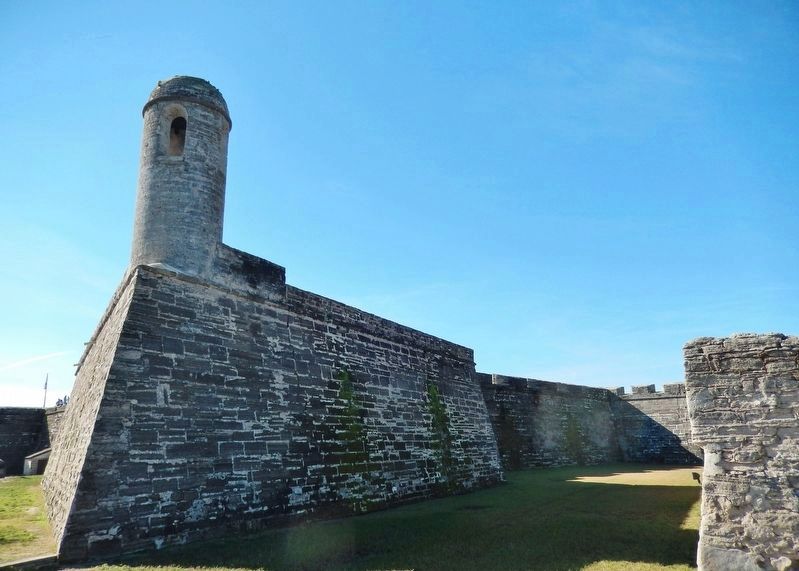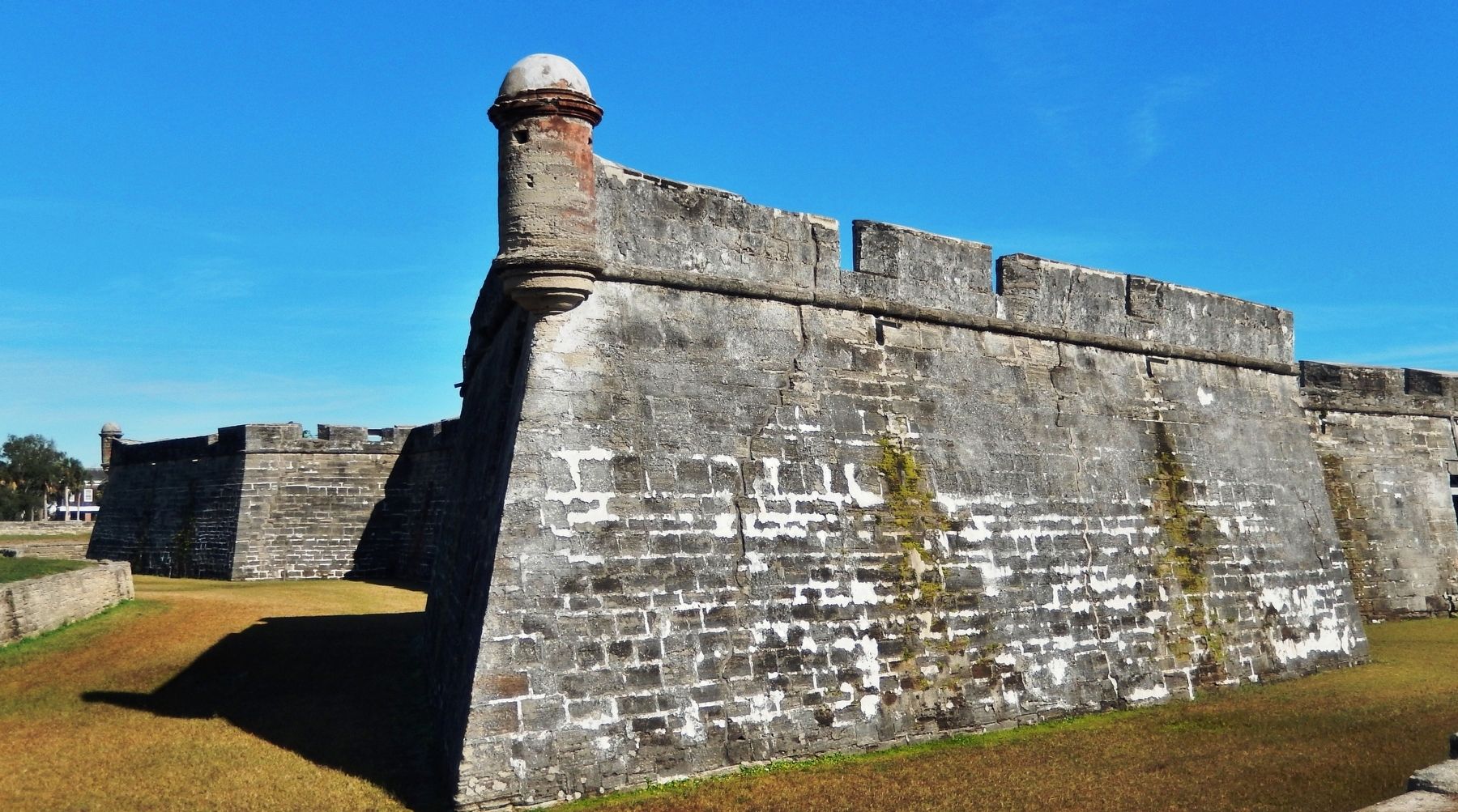Historic District in St. Augustine in St. Johns County, Florida — The American South (South Atlantic)
Crumbling Coquina / Piedra frágil
Castillo de San Marcos National Monument
You can help us preserve the fort for generations to come: touch this sample of coquina instead of the historic walls.
Usted puede ayudarnos a preservar el fuerte para las futuras generaciones: toque esta muestra de coquina en lugar de tocar las murallas históricas.
Erected 2018 by National Park Service, U.S. Department of the Interior .
Topics. This historical marker is listed in these topic lists: Architecture • Colonial Era • Forts and Castles • Hispanic Americans.
Location. 29° 53.837′ N, 81° 18.676′ W. Marker is in St. Augustine, Florida, in St. Johns County. It is in the Historic District. Marker can be reached from the intersection of South Castillo Drive (State Road A1A) (Business U.S. 1) and Cuna Street, on the right when traveling north. Marker is located on the Castillo de San Marcos National Monument grounds, near the main front entrance at the southeast corner of the Castillo. Touch for map. Marker is at or near this postal address: 1 South Castillo Drive, Saint Augustine FL 32084, United States of America. Touch for directions.
Other nearby markers. At least 8 other markers are within walking distance of this marker. Covered Way (a few steps from this marker); Spanish Stronghold / Ciudadela española (a few steps from this marker); Multi-Use Moat / ¿Un foso sin agua? (within shouting distance of this marker); Sentry Box (within shouting distance of this marker); The Cross of Burgundy: Symbol of Spain (within shouting distance of this marker); Guarding the Back Door / Vigilando dos entradas (within shouting distance of this marker); Firing Steps
(within shouting distance of this marker); Fort Marion (within shouting distance of this marker). Touch for a list and map of all markers in St. Augustine.
More about this marker. Marker is a large composite plaque, mounted horizontally on waist-high metal posts.
Related markers. Click here for a list of markers that are related to this marker. Castillo de San Marcos National Monument
Also see . . .
1. Castillo de San Marcos National Monument. A monument not only of stone and mortar but of human determination and endurance, the Castillo de San Marcos symbolizes the clash between cultures which ultimately resulted in our nation. Still resonant with the struggles of an earlier time, these original walls provide tangible evidence of America’s remarkable history. (Submitted on December 12, 2018, by Cosmos Mariner of Cape Canaveral, Florida.)
2. Castillo de San Marcos: Architecture & Construction. The Castillo de San Marcos is unique in North American architecture. As the only extant 17th century military construction in the country and the oldest masonry fortress in the United States it is a prime example of the "bastion system" of fortification, the culmination of hundreds of years of military defense engineering. It is also unique
for the material used in its construction. The Castillo is one of only two fortifications in the world built out of a semi-rare form of limestone called coquina (the other is Fort Matanzas National Monument 14 miles south). (Submitted on December 12, 2018, by Cosmos Mariner of Cape Canaveral, Florida.)
3. Coquina - The Rock that Saved St Augustine. Who would think that a fort made of seashells would last 300 years? Who would think that a fort made out of seashells would last three days under cannon fire? But the Castillo de San Marcos, made of local coquina stone, did just that... (Submitted on December 12, 2018, by Cosmos Mariner of Cape Canaveral, Florida.)
4. Castillo de San Marcos. Coquina stone was discovered on nearby Anastasia Island. Coquina stone, a soft stone made of broken seashells cemented together in their own lime under tremendous geological pressure, is ideal for building fortifications. Walls of coquina mortared together with oystershell lime cement rose thirty-three feet from a twelve-foot-thick base. Because the wooden firing deck wasn’t strong enough to withstand the shock of recoil, the fort’s sixty guns were concentrated at the bastions, which were filled in solidly with sand and rubble. (Submitted on December 14, 2018, by Cosmos Mariner of Cape Canaveral, Florida.)
5. The Castillo de San Marcos. Although it has been occupied by various
cultures, specifically the Spanish, British, and the US, the Castillo has never been conquered in all of the years of its operation. Many believe its soft and porous stone walls have contributed to this long-lasting fortress. Unlike other stones, coquina has a compressible nature, absorbing the blasts of projectile cannons rather than deflecting; as a result, ammunition gets stuck in the fort walls rather than explode into pieces. (Submitted on December 14, 2018, by Cosmos Mariner of Cape Canaveral, Florida.)
Credits. This page was last revised on August 20, 2020. It was originally submitted on December 10, 2018, by Cosmos Mariner of Cape Canaveral, Florida. This page has been viewed 252 times since then and 25 times this year. Last updated on December 23, 2018, by Cosmos Mariner of Cape Canaveral, Florida. Photos: 1, 2. submitted on December 12, 2018, by Cosmos Mariner of Cape Canaveral, Florida. 3, 4, 5, 6. submitted on December 13, 2018, by Cosmos Mariner of Cape Canaveral, Florida. • Andrew Ruppenstein was the editor who published this page.
